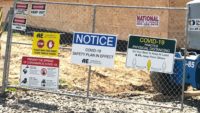 |
| John Wiegand |
When I met John Shook, one of the world’s leading lean management experts in Boston at the Lean Construction Institute Congress in 2015, a colleague asked him how far the construction industry in the U.S. has come with lean construction after 17 years. He responded, “We’re still crawling.”
If lean construction is still in its infancy, how can we expect to agree on what it means or whether we should even be doing it?
I have spent the past 10 years studying lean construction. I’ve applied it in the construction companies I’ve worked with, and now I coach teams on the implementation of a production planning process and help to develop software tools that support lean implementation.
During that time, the U.S. construction industry has made strides in clarifying and improving the application of lean, and it is my opinion that we’ve come out of the crawling stages and now are doing a good forward march. But there are still a few myths that circle the topic.
One is that lean is expensive. Whether it is excess materials, rework of improperly done work or simply time one trade spends sitting around waiting for another trade to finish, waste is without doubt unnecessary and costly. But if you think lean equates to waste reduction, you are missing the point.
Back in 2000, when I started my journey to learn about and apply lean construction principles, I was working as a construction superintendent. I wanted to find out how much time my team was actually wasting. With a notebook and pen in hand, I sat on the sidelines near the construction site. On paper, I numbered each person on the site and tracked their movements. I made a note of when the movement accomplished something and when it did not. The result was astonishing. Whether it was just stepping out to stretch legs or walking back and forth to pick up tools or plans from a distant location, I discovered that my teams were spending more time not producing than they were producing. Much of the industry had the same problem.
I began putting processes in place to eliminate the waste on my sites and saw immediate improvements. You might say that I was implementing lean processes, but you would be wrong.
While I was certainly moving in that direction, the fact is that nearly all competent builders strive to eliminate waste, and some think that means they are operating lean—but most are wrong. Waste reduction is a positive and important product of lean, but it is not lean itself. Rather, lean construction centers around two principles: One is flow, or the ability to operate without interruption and move from task to task in seamless hand-offs. The other is continuous improvement in products, services and processes.
Lots of teams think they are practicing lean construction because they have implemented waste reduction techniques or because they sent their supervisor to “lean construction” training and applied some of the ideas. Actually, practicing lean construction involves a top-down strategic commitment to ongoing improvement, learning and application of lean principles across an entire organization on a continuous basis.
Lots of organizations want the benefits of lean construction. Some will send a superintendent or another key person to lean-construction training. A few will take the whole thing very seriously and begin applying the principles, philosophy and processes to their organization.
Many of those will go astray because they don’t understand that they can’t do it alone.
If your suppliers and partners are not engaged in your lean process, the negotiation phase is going to fail. You cannot plan a lean project if you don’t know when, where and how your suppliers are going to deliver, and you can’t know that unless they also have implemented lean principles.
For lean to be truly lean, all the trades, all the suppliers and all the customers must be actively engaged in the lean process on all projects. You can’t simply hire an expert to lay lean over a framework of an organization and expect to reap the rewards.
Lean construction demands an intentional, committed philosophy and process and involves people, partners and a systematic, documented approach to problem solving. This vision is not something that can be accomplished in one project or even a few. There are no shortcuts. It must be ongoing, embedded in the culture and baked into the organization. And one final point: It’s never complete.
If you have an idea for a column, please contact Viewpoint Editor Richard Korman at richard.korman@construction.com.




